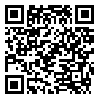Volume 64, Issue 12 (6 2006)
Tehran Univ Med J 2006, 64(12): 57-63 |
Back to browse issues page
Download citation:
BibTeX | RIS | EndNote | Medlars | ProCite | Reference Manager | RefWorks
Send citation to:



BibTeX | RIS | EndNote | Medlars | ProCite | Reference Manager | RefWorks
Send citation to:
Hoseinkhan Z, Behzadi M. Morphine, Pethidine and Fentanyl in post-operative shivering control: a randomized clinical trial. Tehran Univ Med J 2006; 64 (12) :57-63
URL: http://tumj.tums.ac.ir/article-1-860-en.html
URL: http://tumj.tums.ac.ir/article-1-860-en.html
Abstract: (14662 Views)
Background: Postoperative shivering is a common postoperative complication. The aim of this study was to compare the effects of morphine, pethidine and fentanyl in postoperative shivering control.
Methods: In this prospective, randomized, placebo-controlled, double-blinded, clinical trial, we enrolled 72 adults scheduled for elective surgery under general anesthesia at Imam Khomeini Hospital in 2003. All the patients were anesthetized in the same manner. After transferring the patients to the post-anesthesia care unit, shivering was noted and, in patients with a shivering score of one or more, morphine (2.5 mg), pethidine (25 mg), fentanyl (25 µg) or normal saline (all with a volume of 10 ml) was randomly administered intravenously by a two-minute injection. A second shivering score was recorded 10 minutes later.
Results: Pethidine and fentanyl were significantly more effective than normal saline, but there was no significant difference between normal saline and morphine groups. Pethidine was more effective than two other drugs in shivering control.
Conclusions: Pethidine was significantly more effective than two other drugs. Fentanyl decreases postoperative shivering less effectively than pethidine, but morphine had no effect on postoperative shivering with an effect comparable to normal saline.
Methods: In this prospective, randomized, placebo-controlled, double-blinded, clinical trial, we enrolled 72 adults scheduled for elective surgery under general anesthesia at Imam Khomeini Hospital in 2003. All the patients were anesthetized in the same manner. After transferring the patients to the post-anesthesia care unit, shivering was noted and, in patients with a shivering score of one or more, morphine (2.5 mg), pethidine (25 mg), fentanyl (25 µg) or normal saline (all with a volume of 10 ml) was randomly administered intravenously by a two-minute injection. A second shivering score was recorded 10 minutes later.
Results: Pethidine and fentanyl were significantly more effective than normal saline, but there was no significant difference between normal saline and morphine groups. Pethidine was more effective than two other drugs in shivering control.
Conclusions: Pethidine was significantly more effective than two other drugs. Fentanyl decreases postoperative shivering less effectively than pethidine, but morphine had no effect on postoperative shivering with an effect comparable to normal saline.
Keywords: Postoperative shivering
| Rights and permissions | |
 |
This work is licensed under a Creative Commons Attribution-NonCommercial 4.0 International License. |





